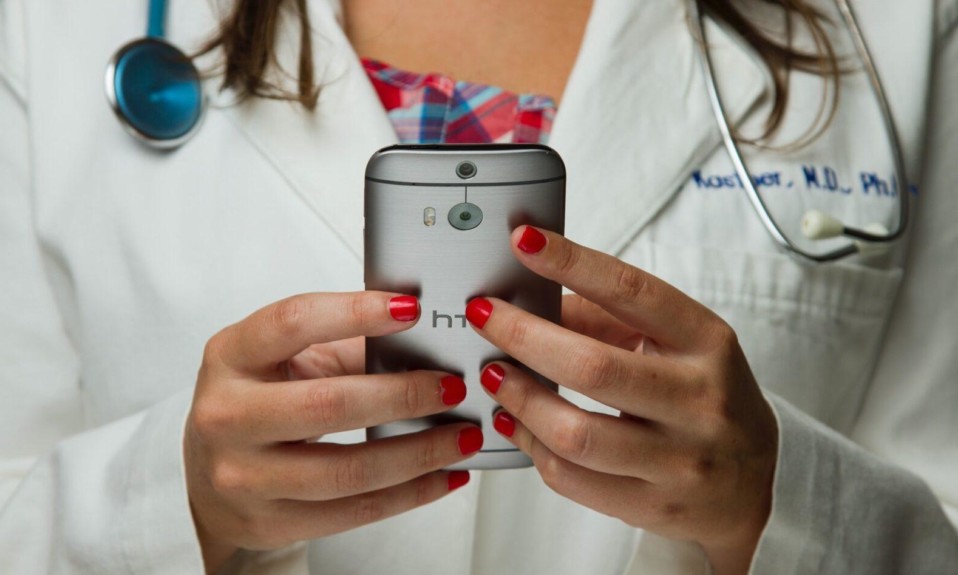Virtual healthcare, which has proliferated and become more sophisticated during the pandemic, will be an even greater presence in the future
By Jason Langendorf
April 8, 2021Eight months was all it took for Eric Bogue to be transformed from a person frustrated and only half-interested in his recovery into a true believer and apostle of telehealth addiction treatment.
Bogue first attempted to address his substance use disorder in 2014, but his traditional recovery efforts fell short—even if, he admits, he gave it something less than his best shot. “I didn’t take it seriously then,” he says.
But it wasn’t only his mindset that was holding Bogue back. His job as a security officer is located two cities away from his home in Frankfort, Ky., while his young daughter lives three cities away—in the opposite direction. “Back when I was going to the clinics, it just was not working out,” he says. “I would have to take a day off to get all that accomplished in the same day, get my errands done and go get my daughter.”
[Telehealth] is absolutely the future. Not even just addiction treatment, but for doctors in general. It’s absolutely modernized.”—Eric Bogue, telehealth patient
About a year ago, Bogue came across an advertisement that would change his life. The spot promoted a company, PursueCare, offering telehealth-based recovery—essentially, remote addiction treatment. He learned he could make clinic “visits,” attend meetings and get practically on-demand recovery care from home. He was impressed by the privacy built into the program, which removes the stigma some feel when walking into brick-and-mortar clinics—and cuts out other potentially awkward moments.
“I’m gonna tell you one of the big things for me with telehealth: I love how they do the drug screens,” Bogue says of PursueCare’s video-supervised mouth-swab testing. “I’m a very private person. I don’t like having to go and pee in front of somebody in a clinic.”
In a short time, Bogue was hooked on telehealth, and in the eight months since he began his PursueCare program, he says his recovery has been “phenomenal.” He’ll tell anyone who’ll listen about the benefits of telehealth addiction care, including a couple of friends he recruited into the program. “For me, just the whole experience,” Bogue said, “it was almost like it was too good to be true.”
The Proliferation of Telehealth
It’s hardly a new phenomenon, but telehealth’s popularity has exploded over the past year, accelerated by a COVID-19 pandemic that has restricted face-to-face engagement and prompted the federal government to temporarily loosen virtual healthcare restrictions to meet overwhelming demand. With so many having recently been introduced to this option, how might remote care evolve to meet demand? Expect the future to bring expanded access, more customized care for individuals and groups, and growing acceptance of telehealth as an integral part of the continuum of care.
Although one of the great benefits of telehealth has been improving access to care in underserved communities, we’re likely only halfway home. Increasing awareness about telehealth is important—Bogue says he didn’t even know of its existence until about a year ago—but so too is extending that access to everyone.
What we’ve seen with COVID, in terms of telehealth, is phenomenal. I think that’s the one silver lining of COVID. We’ve now supercharged our healthcare.”—Courtney Hunter, vice president of state policy for Shatterproof
Many people with the greatest need for treatment lack the resources to afford a computer, a smart device or wifi. Meanwhile, some of the communities where reliable internet connectivity remains a problem—mountain towns and remote areas, for instance—have been hit hardest by the drug epidemic.
“What we’ve seen with COVID, in terms of telehealth, is phenomenal,” says Courtney Hunter, vice president of state policy for the addiction nonprofit Shatterproof. “I think that’s the one silver lining of COVID. We’ve now supercharged our healthcare in a way that can make behavioral health services so much more accessible for people, particularly in rural communities. And so how do we get people even the fundamentals, whether that’s a cellphone plan or a disposable phone or whatever, so that they can access those services?”
Telehealth: A Personalized Treatment Approach
Innovators in the addiction treatment space were considering or already delivering new telehealth offerings before the pandemic, a trend we will likely see expand in coming years.
“Before COVID hit, this was already in our pipeline,” says Hazelden Betty Ford Foundation CEO in-waiting Joseph Lee. “And we did it because we saw that patients had geographic limitations. Our virtual services were unique in that they provided group and individual therapy, so it wasn’t just an individual thing. But that’s just the start.”
Post-pandemic, we’re going to see a permanent move to at least hybridizing care between in-person and virtual solutions. I think most of the research is indicating that digital health is definitely here to stay.”—Nick Mercadante, founder and CEO of PursueCare
Nick Mercadante, founder and CEO of PursueCare, notes the different cultural norms and social determinants of health across regions, states and even neighboring communities. He believes providing options that meet individual needs, as well as catering to the distinct needs of specific populations—Mercadante worked with the elderly in skilled nursing facilities before launching PursueCare—will play an important role in unlocking telehealth’s full potential.
“It’s kind of the double-black-diamond approach,” Mercadante says. “But I think ultimately we get better outcomes with what we do, rather than just barreling into it.”
Virtual Care Is Here to Stay

Experts continue to push for the full adoption of the emergency telehealth provisions instituted during the pandemic. At the same time, antiquated state mandates and restrictions that have often gummed up the works are being rethought, gradually lowering the barriers to more effective care. Mercadante says lawmakers are coming to the realization that many well-intentioned policies are doing more harm than good, and he imagines a future in which traditional brick-and-mortar healthcare and telehealth operate not just side by side, but collaboratively.
“Post-pandemic, we’re going to see a permanent move to at least hybridizing care between in-person and virtual solutions,” Mercadante says. “I think most of the research is indicating that digital health is definitely here to stay. It can play a role, even with in-person care, to augment and support, to help stay tethered with your patients in between visits and keep patients engaged and thinking about next steps in their care.”
President Joe Biden’s plan to expand access to addiction treatment would grease the skids for a fixed, dynamic telehealth system of care in the United States, and his proposed infrastructure bill would go a long way toward improving internet capabilities in communities that are most in need of addiction recovery care.
“This is absolutely the future,” Bogue says. “Not even just addiction treatment, but for doctors in general. It’s absolutely modernized. It’s the future.”
Top photo: National Cancer Institute; bottom photo: Bermix Studio













